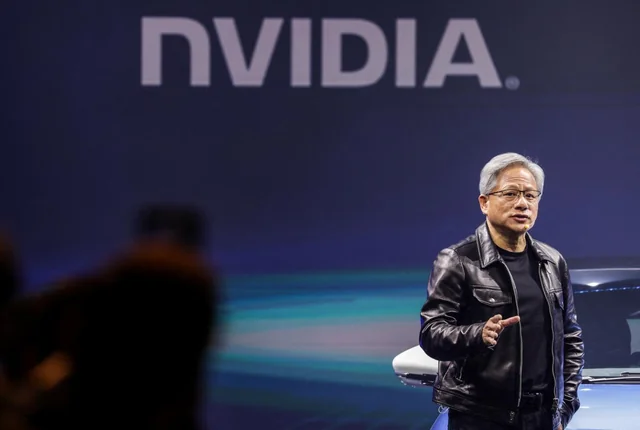Nvidia (NVDA) will announce its fourth quarter earnings after the bell on Wednesday, one of the most highly anticipated earnings reports in recent memory. Shares of the AI chip darling have skyrocketed 184% over the last 12 months, easily outpacing rivals AMD (AMD) and Intel (INTC), which saw their shares rise 91% and 67%, respectively.
Nvidia’s incredible run briefly pushed its market capitalization past Amazon (AMZN) and Google parent Alphabet (GOOG, GOOGL) last week, making it the third-most-valuable publicly traded company in the world behind only Microsoft (MSFT) and Apple (AAPL). But as of Tuesday, Amazon and Alphabet reclaimed their leads over Nvidia.
For the fourth quarter, analysts expect Nvidia to report adjusted earnings per share (EPS) of $4.60 on revenue of $20.4 billion, up from adj. EPS of $0.88 on $6.1 billion a year ago. That’s a year-over-year increase of 234%. To put Nvidia’s performance into perspective, the company reported $27 billion in revenue for all of 2022.
Analysts expect Nvidia’s Data Center revenue of $17.2 billion in the quarter, up from $3.62 billion in the same quarter last year. Nvidia’s Data Center segment has quickly become its most important revenue stream thanks to the rapid increase in interest in artificial intelligence driven by the explosion in generative AI apps.
In January, Meta (META) said it is building out its AI data centers to include 350,000 of Nvidia’s flagship H100 chips by the end of 2024. While Nvidia doesn’t disclose the price of its chips, the H100 is estimated to cost tens of thousands of dollars. That means Meta alone will pay billions for Nvidia’s chips.
Gaming, which used to be Nvidia’s largest business segment, is expected to generate revenue of $2.7 billion, up from $1.8 billion last year.
Analysts will also be keeping an eye on Nvidia’s forward guidance. The company has easily surpassed revenue guidance in the last few quarters, and another beat would signal continued strength in the AI trade.
To say that expectations for Nvidia are high would be a wild understatement. A number of Wall Street analysts have changed their price targets on the company’s shares, with UBS analyst Timothy Arcuri increasing the bank’s price target from $580 to $850, and Stifel’s Ruben Roy setting a new target of $865 from $665. Wedbush’s Matt Bryson also increased the firm’s price target on Nvidia to $800 from $600.
Nvidia’s growth, however, is facing challenges from all sides. The company’s chief rival, AMD, is investing heavily in its own AI chips, including its new MI300X. According to AMD, the chip surpasses Nvidia’s H100 in certain workloads, but Nvidia has refuted those claims, saying AMD’s testing was incomplete. Intel also has its own server chips and continues to build on their capabilities.
Nvidia’s customers are also increasingly looking to develop their own specialized AI chips to ease their reliance on Nvidia’s offerings. Amazon, Google, Meta, Microsoft, and Tesla (TSLA) are just a few of the big-name firms that either currently offer or are actively developing their own in-house AI chips.
Those chips are designed specifically for each company’s needs, improving efficiency and power consumption, versus Nvidia’s more generalized chips. But Nvidia isn’t taking this threat lying down. According to Reuters, the company has met with Alphabet, Amazon, Meta, Microsoft, and OpenAI to discuss building custom chips for them.
In addition to rivals, Nvidia continues to contend with US export restrictions on its most powerful chips to China. While the company has said that the ban won’t impact its financial situation at the moment, it has expressed concern that the measure could cause it to miss out on potential sales in the future.

